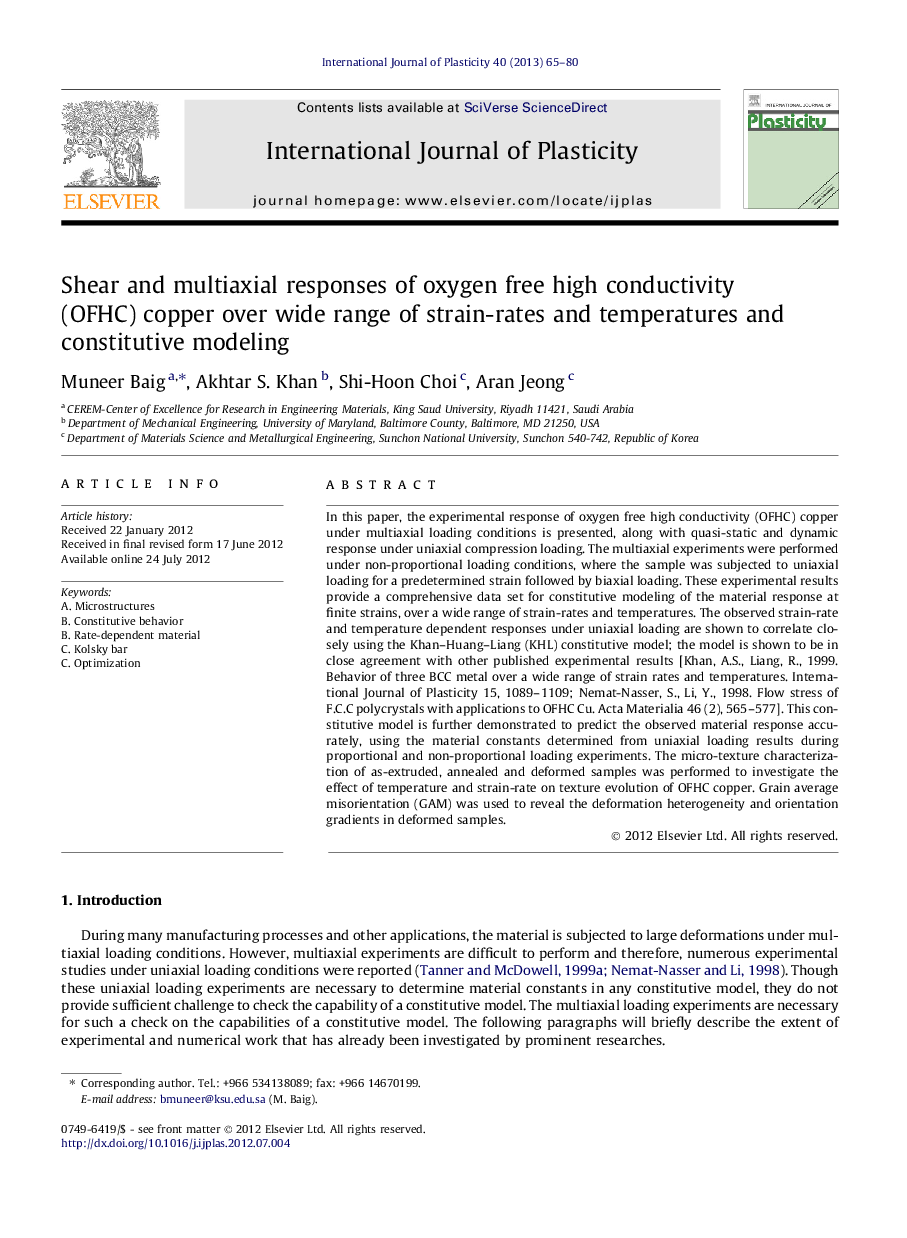| Article ID | Journal | Published Year | Pages | File Type |
|---|---|---|---|---|
| 786955 | International Journal of Plasticity | 2013 | 16 Pages |
In this paper, the experimental response of oxygen free high conductivity (OFHC) copper under multiaxial loading conditions is presented, along with quasi-static and dynamic response under uniaxial compression loading. The multiaxial experiments were performed under non-proportional loading conditions, where the sample was subjected to uniaxial loading for a predetermined strain followed by biaxial loading. These experimental results provide a comprehensive data set for constitutive modeling of the material response at finite strains, over a wide range of strain-rates and temperatures. The observed strain-rate and temperature dependent responses under uniaxial loading are shown to correlate closely using the Khan–Huang–Liang (KHL) constitutive model; the model is shown to be in close agreement with other published experimental results [Khan, A.S., Liang, R., 1999. Behavior of three BCC metal over a wide range of strain rates and temperatures. International Journal of Plasticity 15, 1089–1109; Nemat-Nasser, S., Li, Y., 1998. Flow stress of F.C.C polycrystals with applications to OFHC Cu. Acta Materialia 46 (2), 565–577]. This constitutive model is further demonstrated to predict the observed material response accurately, using the material constants determined from uniaxial loading results during proportional and non-proportional loading experiments. The micro-texture characterization of as-extruded, annealed and deformed samples was performed to investigate the effect of temperature and strain-rate on texture evolution of OFHC copper. Grain average misorientation (GAM) was used to reveal the deformation heterogeneity and orientation gradients in deformed samples.
► The paper presents responses of OFHC copper at various strain-rates and temperatures. ► The capability of KHL model to correlate and predict the observed responses are shown. ► The micro-texture analysis of as-extruded, annealed and deformed samples is performed. ► The correlations and prediction of earlier published results using KHL model is shown.
